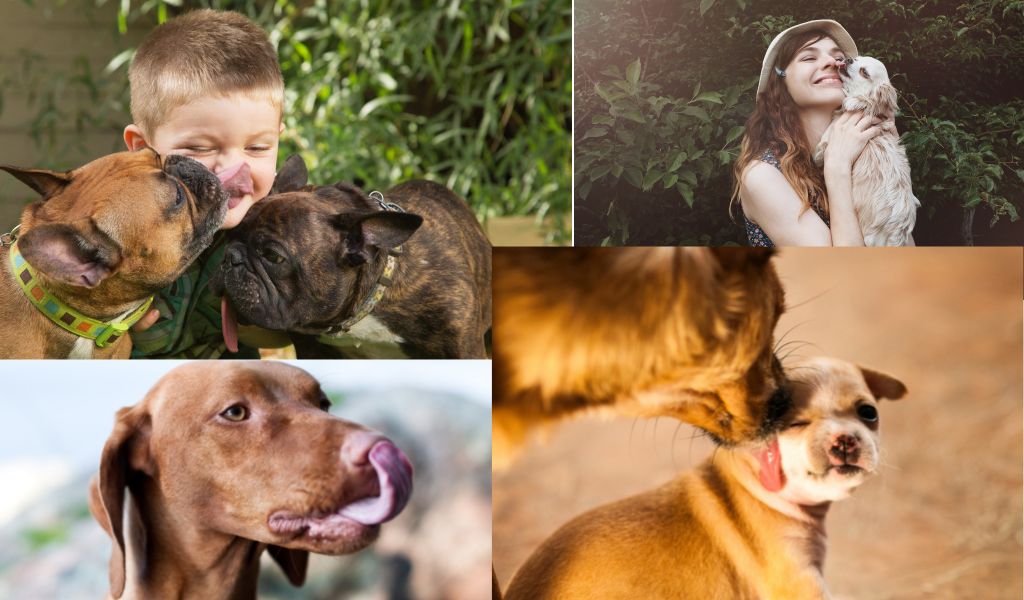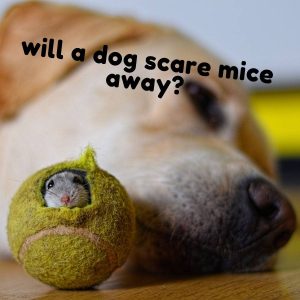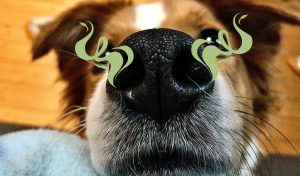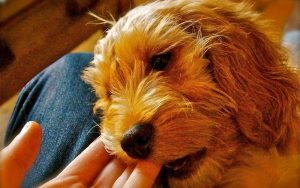Ever wonder why your dog loves to lick your face?
Is it just a sign of affection or is there something more behind the behaviour?
Licking faces can be an enjoyable experience for both you and your dog, but it’s important to understand why they do it.
In this blog post, we’ll explore some of the possible reasons that dogs like licking faces as well as tips on how to respond when they start licking.
We’ll also look at safety tips when interacting with other people’s dogs who may try to lick your face, so you know what precautions to take.
Why dogs like licking faces
Dogs have a unique way of expressing their affection and one of the most beloved is licking.
It has been observed that dogs often lick faces of their owners or humans close to them.
This behaviour can be interpreted in different ways depending on the context, but it is thought to be an act of love and trust between dog and owner.
The meaning behind why dogs lick faces isn’t completely figurative though, as the face and facial features contain many enticing oils and salt which linger after meals or activities and are attractive to a canine’s taste buds.
Additionally, this action tends to stimulate endorphins in both dog and human, resulting in a higher degree of bonding than previously established during playtime.
All in all, licking faces is often seen as an act of loyalty from dogs towards those whom they are fond of.
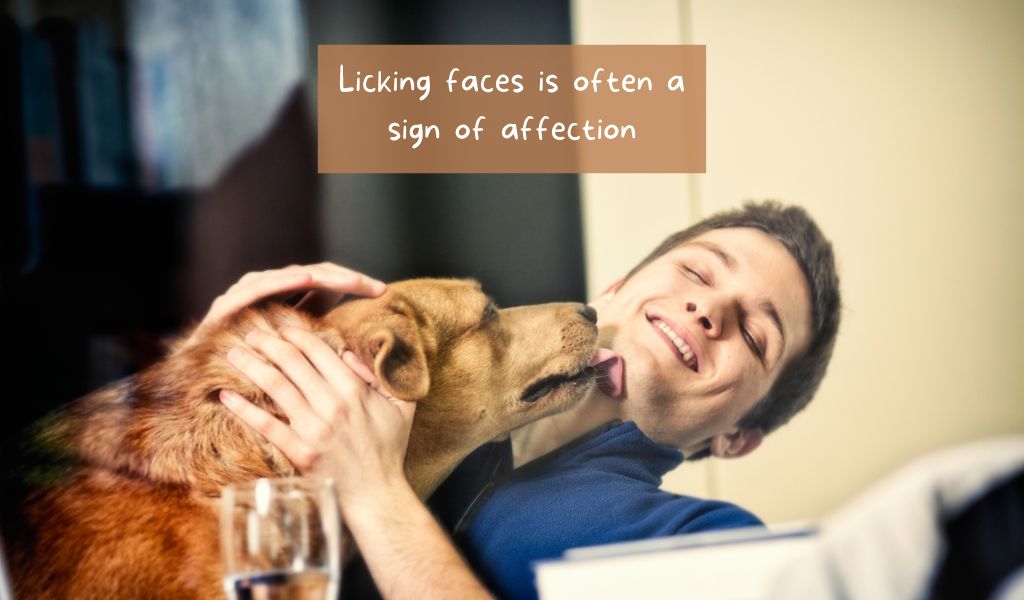
Possible evolutionary explanations for the behaviour
It is suggested that it may have originated from puppies licking their mother’s face during nursing, or adult dogs licking the faces of their human companions as a form of submissive behaviour.
No matter what the underlying cause is, one thing is sure, when your pup starts to lick your face, they’re showing you love.
Benefits that dogs get from licking faces
Dogs that lick faces get a number of benefits from the behaviour.
It can help them to bond with humans, as well as provide a means of comfort in times of stress or anxiety.
Licking also allows dogs to show their affection and appreciation more clearly than other forms of communication.
In addition, licking releases endorphins in the brain which leads to feelings of happiness and contentment in both dog and human.
Finally, it is believed that this behaviour gives dogs an increased sense of safety and trust around their owners, furthering the bond between them.
Tips on how to train your dog not to lick faces excessively
It is important to be aware that some dogs can become overly excited when it comes to licking faces.
This could indicate a lack of self-control and may need to be addressed through proper training and behaviour modification.
The following tips are recommended for training your dog not to lick faces excessively:
Give verbal commands such as “stop” or “no” in a firm but calm voice whenever the licking becomes too much.
When your dog does stop, reward them with a treat or affectionate praise.
If the behaviour continues, consider redirecting their attention by engaging them in playtime activities or offering them an alternative activity.
Be consistent with your approach and always ensure that you follow through with the commands.
Learn more about why your dog does what he does
How to tell if a dog is trying to show affection by licking you or if it’s being aggressive
It is important to be able to distinguish between a dog displaying affection through licking and one that is being aggressive.
A good rule of thumb is to observe the behaviour for any signs of aggression, such as baring teeth or growling.
Often an aggressive dog will flick it’s tongue in and out while showing it’s front teeth, with lips curled back, this will often be accompanied by raised hair, hackles and growling.
If these behaviours are present, then it’s best to remain calm and slowly back away from the situation.
Safety tips with other people’s dogs who may try to lick your face
When coming into contact with a strange dog, it is important to take safety precautions.
Here are some tips for maintaining a safe environment:
Always avoid directly looking into the dog’s eyes and maintain relaxed body language.
Don’t make any sudden or loud noises, as this can startle the animal.
Don’t attempt to touch him if he starts licking your face, gently push away his muzzle and ignore the behaviour.
Stand up slowly if you are sitting down when the licking begins so that you don’t startle him.
If possible, ask the pet’s owner to kindly stop the behaviour before trying other techniques yourself.
By following these simple tips, you can help to ensure that your interaction with dogs remains safe and enjoyable.
Final Words
Understanding why dogs lick faces can help you to better appreciate their affection and build a stronger bond with your pet.
It is important to remember that the behaviour should be monitored and managed, as excessive licking can become a problem if left unchecked.
If you find yourself in a situation where another dog’s licking has become too much, then follow the safety tips outlined above for maintaining a safe environment.
Overall, face licking is an adorable behaviour that demonstrates love between dogs and humans so enjoy it while it lasts.

